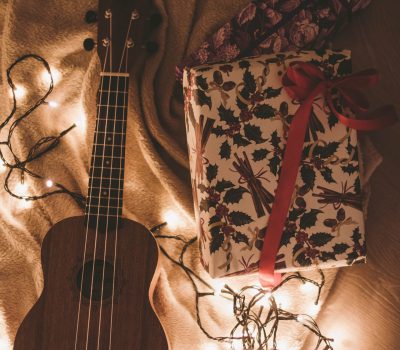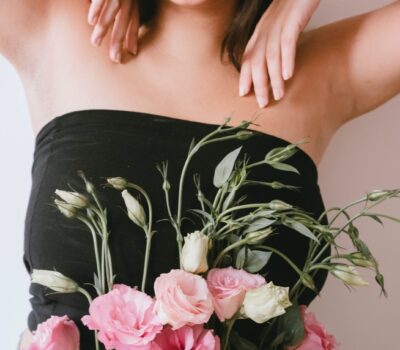


Our team sorts through all blog submissions to place them in the categories they fit the most - meaning it's never been simpler to gain advice and new knowledge for topics most important for you. This is why we have created this straight-forward guide to help you navigate our system.


And there you have it! Now your collection of blogs are catered to your chosen topics and are ready for you to explore. Plus, if you frequently return to the same categories you can bookmark your current URL and we will save your choices on return. Happy Reading!

The education system is something which narrows its focus over time. By the time you reach the level of PhD, you’re working on a highly focused and specific topic; a small niche of study in a wider field. But, before you reach those lofty heights, you have to develop broader skills. Each level of education provides you with the skills you’ll need for the next one; hence why you begin school learning basic numeracy and literacy skills.
All of this is my meandering lead into talking about skills which are applicable in a broad range of circumstances. Or, rather, a specific skill with broad applications. The fact that you’re able to read this suggests that you’re aware of the importance of things like basic literacy. Instead, let’s talk about creative writing; a skill whose broader applications aren’t always obvious.
When you think of creative writing, your thoughts will probably jump straight to writing novels, screenplays and poetry. Yet, creative writing is simply that; writing creatively. The better you are at this, the more you can do with your writing. To put it another way, it’s like jogging. You may not like it (I certainly don’t) and you may have no plans of doing a marathon. However, there are plenty of times in daily life where being able to jog briefly without collapsing is a useful skill. Creative writing is more than just writing fiction. Have you ever needed to write a report or other account of factual events? Because this is something you’ll definitely want people to be able to read through without confusion, as well as keeping their attention. All the skills you use to write an exciting sci-fi story are what you can use to make your factual reporting more compelling.
And this is just discussing the writing side of it. In terms of broadly applicable skills, creativity is pretty much universal. Being able to consider the factors of a situation and creatively come up with a solution is a valued ability in any circumstance. And, to go back to the exercise metaphor, creativity is like a muscle; the more you use it, the stronger it gets. Giving your students/children creative writing activities is a useful way to encourage creative thinking while also helping to boost their vocabularies and writing skills.
So, having discussed the ‘why’, let’s move on to the ‘how’. What’s the best way to teach children to write creatively? It’s worth considering because there can be some temptation to micromanage your students’ writing. This is because there are some approaches to creative writing that can be considered objectively incorrect. Sentences can run on too long, or descriptions can be vague and difficult to follow. But these are structural issues, and shouldn’t be your main focus. The best approach to teaching creative writing is one you can apply to any creative activity. You simply let them experiment.
Make it clear to them that no one is expecting them to do amazing work right out of the gate. Instead, encourage them to explore different ways of doing things, to find out what suits them best. Your role should be to give them exercises that provide a framework for them to do that. After all, as any writer can tell you, there’s nothing more intimidating than a blank page.
Besides, beyond all the practical benefits of creative writing, it can also just be fun. For teachers, it can serve as an excellent wind-down activity at the end of the day. Or as a lighter activity to break things up between heavier, less creative, subjects. For parents, it can be a fun bonding activity between you and your children.
Ultimately, creative writing can be a good reminder of why it’s important to have fun while learning.

The author

Read more

Read more

Read more

Read more

Read more

Read more

Read more

Read more


Are you looking for solutions? Let us help fund them! Nexus Education is a community of over 11,000 schools that come together to share best practise, ideas and CPD via online channels and free to attend events. Nexus also offers funding to all school groups in the UK via nexus-education.com


Established in 2011, One Education is a company at the heart of the education world, supporting over 600 schools and academies. Our unique appeal as a provider is in the breadth and synergy of the services we offer, supporting school leaders, teachers and support staff to achieve the best possible outcomes for their pupils and staff.

School Space is a social enterprise that has empowered schools for over 12 years through their profitable and hassle-free lettings services. So far, they’ve generated over £5 million in revenue for education, helping to connect over 200 schools with their local communities.


Unify is an online sales and marketing tool that allows users to create tailored personalised documents in moments.


There’s nothing special about the energy we sell. In fact, it’s exactly the same energy as all our competitors provide. But there is something special about the way we do it. Where others complicate the process, we simplify it. Where others confuse customers with hidden terms, we’re an open book. And where others do all they can to make as much money from their customers as possible, we do all we can to make as little. Everything we do, we do it differently. Our customers are a privilege. One we’ll never take advantage of.


Securus provide market-leading monitoring solutions to safeguard students on ALL devices both online and offline. We also offer a full monitoring service, where we carry out the monitoring on behalf of the school, freeing up valuable staff resources. From the smallest school to large MAT groups, Securus offers safeguarding protection for all!


Bodet Time offers dedicated solutions to education through lockdown alerts, class change systems, PA and synchronised clock systems. Improving time efficiency of the working and school day; ensuring safety through lockdown alerts; increasing communication with customised broadcast alerts.


Robotical makes Marty the Robot - a walking, dancing coding robot that makes programming fun and engaging for learners as young as 5. Our robots come with a full Learning Platform that has complete teaching resources, to make lesson planning a breeze.